- Size
- Smallest
- Small
- Small to Medium
- Medium
- Large
- Giant
- Characteristics
- Smartest
- Hypoallergenic
- Fluffy
- Best Guard
- Best Family
- Best for Kids
- Low Shedding
- Healthiest
- Police Dogs
- Most Calm
- Quietest
- Color
- White
- Black
- Grey
- Brown
- Blue
- Red
- Coat
- Hairless
- Short
- Long
- Origin
- Japan
- China
- Australia
- Germany
- Italy
- United States
- France
- Group
- Hound
- Terrier
- Herding
- Toy
- Working
- Sporting
The 10 Dog Breeds with Prominent Hackles
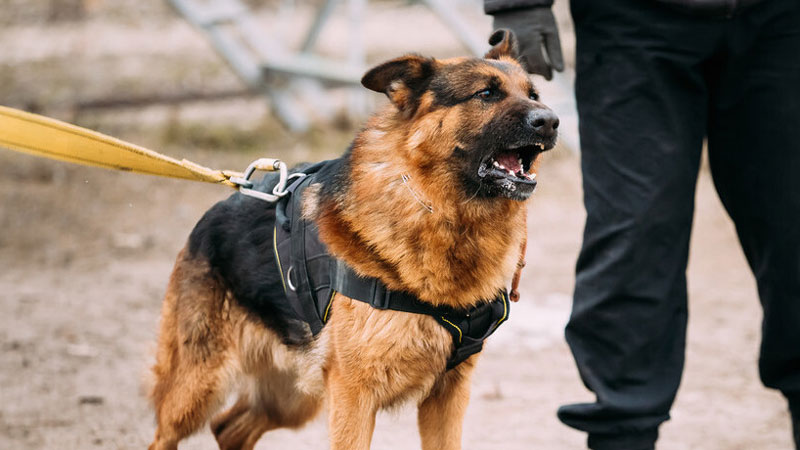
Before delving into specific dog breeds, it's essential to comprehend the nature of raised hackles in dogs. Hackles refer to the hairs along a dog's spine, and their elevation is supported by a set of unique muscles. This involuntary reflex is triggered by the dog's nervous system, resulting in the hackles standing up when the dog experiences heightened emotions, commonly associated with the fight or flight response.
Raised hackles are not exclusively a sign of aggression; they can signify various emotions, including excitement, curiosity, aggression, or anxiety. To accurately interpret a dog's emotional state, it's crucial to consider the overall context, body language cues, and other contributing factors.
Here are some dog breeds known for their prominent hackles:
Certain dog breeds are more prone to visibly displaying raised hackles due to their distinct coat characteristics. Breeds with shorter, finer coats tend to exhibit this phenomenon more prominently, creating a fascinating tapestry of breed-specific behaviors.
1. German Shepherd
One of the most well-known breeds with prominent hackles is the German Shepherd. These intelligent and loyal dogs are easily recognized by their erect ears, noble posture, and muscular build. However, their most distinct feature is the thick double coat that stands up on the neck and back, creating an intimidating presence when they are alert.
German Shepherds are frequently used in police and military work due to their protective nature and exceptional tracking abilities. The reason behind their prominent hackles is rooted in their breed's heritage as herding dogs, where raised hackles served as a visual indicator to intimidate predators or assert dominance. Today, while they may no longer have the same herding duties, the display of prominent hackles is often an instinctual response to ensure their alertness and readiness to face potential threats.
Related: German Shepherd Trivia Quiz: 20 Questions
2. Rhodesian Ridgeback
Another breed that often garners attention for its prominent hackles is the Rhodesian Ridgeback. However, it's important to note that their hackles are not a result of raised hair on their neck or back, but rather due to a distinctive feature called a ridge. This breed has a strip of hair growing in the opposite direction along their spine, forming a prominent ridge. The ridge not only creates a unique visual appearance but also leads to the perception of constantly raised hackles.
Beyond their striking physical appearance, Rhodesian Ridgebacks are known for their independent and self-assured nature. Originally bred to hunt lions in Africa, their prominent ridge and raised hackles became advantageous in intimidating prey and signaling their readiness for action. While their hackles remain raised most of the time, assessing a Rhodesian Ridgeback's emotional state requires observing other body language cues in conjunction with their prominent hackles.
3. Siberian Husky
The Siberian Husky, known for their striking blue or multicolored eyes, wolf-like appearance, and thick double coat, is another breed that can exhibit prominent hackles. Originating from Siberia, where they were bred to pull sleds through harsh landscapes, Siberian Huskies possess a strong prey drive and considerable endurance.
When engaged in activities such as sledding or herding, Siberian Huskies often raise their hackles, which can be perceived as a sign of intense focus and energy. However, it is crucial to differentiate between their raised hackles during active tasks and when they are at rest or engaging in normal daily activities. Understanding the context and observing other body language cues will provide a clearer understanding of their emotional state.
Related: Alaskan Malamute vs. Siberian Husky: Which Is Better?
4. Akitas
The Akita is a large and powerful Japanese breed that captures attention with its regal appearance and, at times, prominent hackles. Known for their loyalty and strong protective instincts, Akitas have a thick double coat with longer, coarse guard hairs. When an Akita is aroused or feels threatened, their hackles may raise along their back and tail, adding to their imposing presence. Similar to German Shepherds, their prominent hackles serve as a visual deterrent, conveying a message of assertiveness and readiness to defend themselves or their families.
It's essential to note that while raised hackles can be associated with aggression, Akitas are also known for their calm and gentle demeanor when properly socialized and trained. Understanding their overall body language and the context is crucial when interpreting their emotional state.
5. Chow Chow
With their distinctive lion-like appearance and abundant coat, the Chow Chow is a breed that naturally carries more noticeable hackles. These Chinese dogs have a dense double coat with a lion's mane-like ruff that frames their face and neck, contributing to their majestic presence. When a Chow Chow feels excited or threatened, their thick fur stands up, often creating a prominent display of hackles.
However, it's important to recognize that despite their imposing appearance, Chow Chows are generally calm and independent companion dogs. Assessing their emotional state requires observing other nonverbal cues and considering the context to gain a comprehensive understanding.
6. Jack Russell Terrier
Despite their small size, Jack Russell Terriers are energetic and assertive, traits that may lead to the display of raised hackles.
The short and smooth coat of Jack Russells allows for clear visibility of hackles.
7. Doberman Pinscher
Dobermans are known for their sleek and short coats, which contribute to the visibility of raised hackles.
Raised hackles in Dobermans may signal a range of emotions, from excitement to vigilance.
8. Dalmatian
Known for their distinctive black or liver-colored spots on a white coat, Dalmatians may exhibit raised hackles in response to stimuli.
The short, fine coat of Dalmatians allows for a more visible display of hackles.
Related: 10 Most Common Black and White Dog Breeds
9. Boxer
Boxers, with their muscular build and short, smooth coats, are prone to raising their hackles, especially in situations that trigger excitement or curiosity.
Raised hackles in Boxers may coincide with their playful and affectionate nature.
10. Bull Terrier
Bull Terriers, with their distinctive egg-shaped head and short, flat coat, are known for their individualistic behavior, including raised hackles.
Raised hackles in Bull Terriers may be linked to their strong-willed and confident demeanor.
Breed-Specific Variances in Hackle Visibility
While the mentioned breeds are known for displaying raised hackles, it's crucial to acknowledge that individual variations exist within each breed. Factors such as genetics, temperament, and specific environmental triggers contribute to the variability in hackle visibility. Additionally, longer, curly, or thicker coats in some breeds may make the phenomenon less conspicuous.
Conclusion
Prominent hackles in dogs are not limited to a single breed but are indicative of a broader range of emotions and characteristics. Breeds such as German Shepherds, Rhodesian Ridgebacks, Akitas, Chow Chows, and Siberian Huskies possess distinct physical features, temperaments, and histories that contribute to their renowned hackle displays. However, it's crucial to remember that interpreting a dog's emotional state goes beyond the presence of raised hackles.
By observing their overall body language and considering the context, we can gain a deeper understanding of a dog's unique emotional landscape and respond appropriately to their needs. Respect, care, and proper training are key to fostering harmony and strong bonds with our canine companions, regardless of their hackle display.
You May Also Like
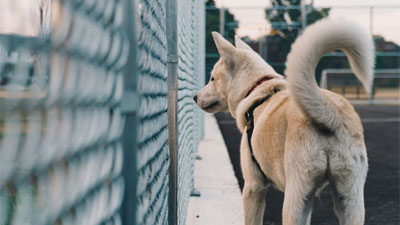 Dog BehaviorWhat Do The Different Dog Tail Positions Mean?
Dog BehaviorWhat Do The Different Dog Tail Positions Mean?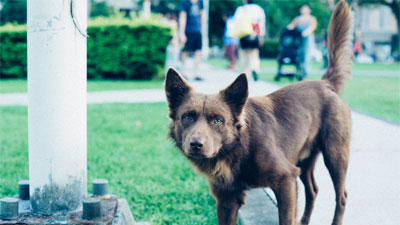 Dog BehaviorHow Do Dogs Show Their Emotions?
Dog BehaviorHow Do Dogs Show Their Emotions?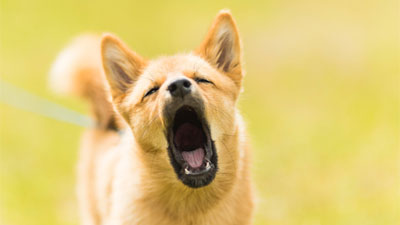 Dog BehaviorThe 6 Common Dog Sounds and Their Meanings
Dog BehaviorThe 6 Common Dog Sounds and Their Meanings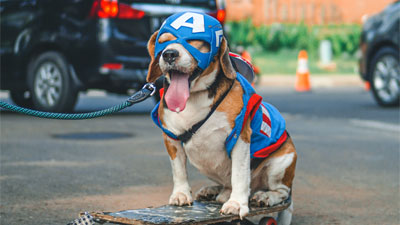 Help & AdviceWhat Is The Hardest Dog Trick?
Help & AdviceWhat Is The Hardest Dog Trick?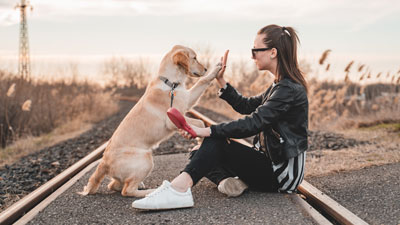 Dog Training TipsHere are the 7 Most Important Dog Commands
Dog Training TipsHere are the 7 Most Important Dog Commands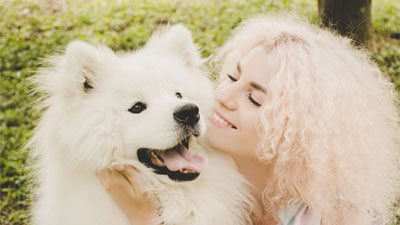 Dog Training Tips5 Easy Steps: How to Teach a Dog to Smile
Dog Training Tips5 Easy Steps: How to Teach a Dog to Smile